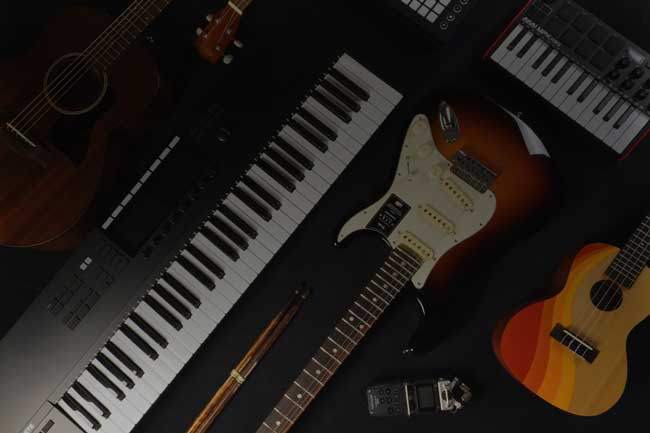MELODYNE MELODYNE 5 Assistant | Software For Tuning,timing,vibrato,levels,sibilance,dna
- Catalog #: 10-11302
- DOWNLOAD CODE
MELODYNE 5 ASSISTANT
Software for Audio Tuning, Editing, Siblance, Chords - Download Code
Celemony Melodyne 5 Assistant is pitch-and-time-shifting software that is well-regarded for its ability to tune and rhythmically realign notes. Professional mixing engineers often use Melodyne to heighten the performance of parts that don't quite make the cut, either in monophonic or polyphonic situations.
Version 5 boasts many new features and various improvements over version 4. A New Fade tool enables the precise control of dynamics, allowing you to naturally change the level and intensity of any note without traditional compression or automation. A Level Macro can execute dynamics control in a more broadstroke manner, without sacrificing musical results. Control sibilance more effectively without instantiating a dedicated de-esser, all by using the new Sibilant tool.
The new Melodic algorithm tunes material in such a way as to preserve its fundamental humanity and natural sound. It also has sibilance detection. For tuned instruments such as tablas or 808 kick drums, Melodyne 5 Assistant offers a new Percussive Pitch algorithm. Editing chords is also much easier thanks to the new Chord Track.
Overhauls have been made in integrating shortcuts and saving presets. Also, the file-saving system has been revamped: no more separate .mdd files; all detection data is now saved to the audio file itself, simplifying your file directory in the process.
Melodyne 5 Assistant is a standalone piece of production software, but it can communicate with your DAW via ARA integration, or use the sotware as a VST, AU, or AAX plug-in. It is compatible with Mac and Windows operating systems.
New to Melodyne 5
- Fade Tool: extensive control of dynamics with note-based fades
- Sibilant Tool: per-note adjustment of volume ratio between pitched and unpitched vocal sounds (de-essing)
- New Melodic algorithm with sibilant detection for natural-sounding results
- New Leveling macro to reduce or eliminate excessive volume disparities between notes
- New Percussive Pitched algorithm for instruments such as tabla, berimbau, or 808 kick drums
- Search functions for keyboard shortcuts, saving of shortcut sets
Features in Version 5
- Psychoacoustically Accurate Pitch Correction: Sometimes an out-of-tune note needs to stay untweaked to preserve the humanity of a performance. Sometimes a note needs to be tuned to sound correct. Melodyne can now better identify and pin down the all important human element while tuning vocal. The software can identify problem areas precisely, and the offset shown in the Note Inspector will be calculated from the pitch of each note at the crucial moment only, rather than its duration. As a result, double-clicking a note value can now yield a musical, correct result. Each individual note is pitched to perfection. Yet everything still sounds natural and alive
- Chord Track and Chord Grid: Melodyne 5 Assistant offers a chord track that is linked to the Pitch Grid in the Note Editor. This makes working with chords far more enjoyable, and working with harmonies much more transparent. Because you can see which pitches are compatible with the current chord at any time, you can adapt the notes accordingly with lightning speed. This is helpful when you're altering chords, and if you want to match any sample harmonically to your music
- Robust Pitch Curve: With this new option, you can obtain better sound quality when editing certain signals, such as those with a great deal of reverberation. When it is activated, the monophonic algorithms employ a pitch curve that has been slightly smoothed out
- Improved Complex Algorithm: This algorithm has been improved and can now be used just as flexibly as the Tonal algorithm when it comes to formant preservation and manipulation
- Better Keyboard Shortcut: A new search function for keyboard shortcuts has been added, and the saving of personalized shortcut sets has been improved
- No More .mdd Files: Melodyne's detection data, which was previously saved to separate .mdd files, is now stored in the audio files themselves, making file directories clearer, and the sharing of projects easier
Basic Features
- Suitable for monophonic, polyphonic, and rhythmic/complex audio material
- Perfect for extensive sound design
- Transfer melodies from track to track
- Works as a plug-in or in standalone mode
- Connect via ReWire to compatible DAWs
- Supports ARA Audio Random Access in compatible DAWs
- Dynamic just intonation for transparent chord tuning
- Universal time-stretching algorithm
- Polyphonic algorithms: sustain (for strings, organs, and the like) and decay (guitar, piano, and other staccato bursts of chordal information)
- Streamlined user-interface
- Enhanced key commands
- Tempo Intelligence: map and edit tempo fluctuations within a recording
Applications
- Manual or automatic correction of intonation and timing errors
- Refashioning of melodies, harmonies, timing, and rhythm
- De-essing, leveling, and dynamics processing
- Transposition
- Modifying various note parameters such as volume, vibrato, and formant spectrum
- Send audio in real time as MIDI notes to a plug-in (virtual instrument)
- In-depth editing of the timing of notes
- Pitch shifting and time stretching
- Requantization
- Audio-to-MIDI with MIDI file export
Monophonic and Polyphonic Material
- Modifying the pitch
- Modifying the pitch drift
- Modifying the pitch modulation
- Modifying the position
- Modifying the length
- Modifying the attack speed
- Modifying the time course within notes
- Modifying the volume
- Shifting the formant spectrum
- Modifying the pitch of any transition between notes
- Modifying the volume of any transition between notes
- Shifting the formant spectrum of any transition between notes
- Timing requantization
- Pitch quantization
- Cut, copy, and paste
Rhythmic and Complex Material
- Modifying the pitch (relative)
- Modifying the position
- Modifying the length
- Modifying the volume
- Modifying the attack speed
- Modifying the time course within notes
- Shifting the formant spectrum
- Modifying the volume transition between blobs
- Shifting the formant spectrum of transitions between blobs
- Timing quantization
- Cut, copy, and paste




